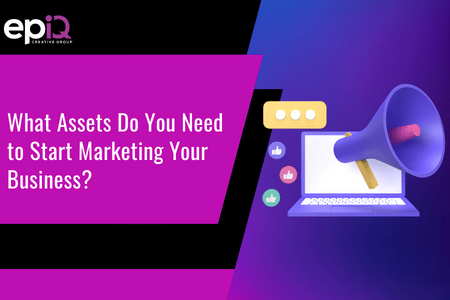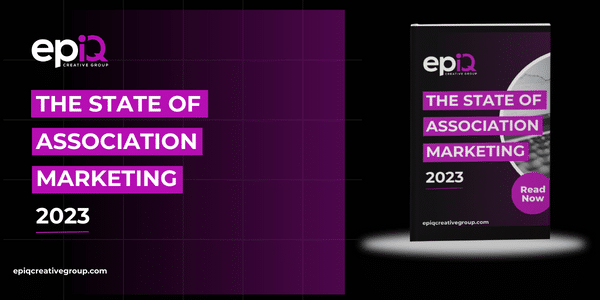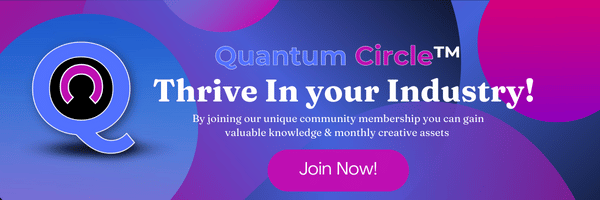What Assets Do You Need to Start Marketing Your Business?
There are many different assets that businesses can use to start marketing their company, but not every asset is necessary for every business. So, what type of marketing assets do you actually need?
This will depend on your goals, your budget, and your target market. However, there are some basics that every business should have covered. These assets aren’t necessarily expensive or time-consuming — in fact, many marketing assets that cost little to no money can still be highly effective.
So, where should you start? Below are the most vital assets for marketing your business:
1. Website
Websites are absolutely vital for success these days. It’s the first impression that most potential customers have of your business; if you make a good first impression, your website can generate leads, build brand awareness, and drive sales.
This is why it’s essential to make sure that it’s well-designed and informative. Your website should be easy to navigate and include clear information about your products or services.
2. Social Media
Social media is one of the most effective marketing channels available to businesses today. Social media allows you to reach a large audience quickly and easily, and it’s a great way to build relationships with potential and current customers. By posting engaging content, you can ensure that your business stays at the top of your audience’s mind.
However, with so many platforms and options available, it’s hard to decide where to start. Each platform has its own unique features and audience, so it’s important to choose the ones that are the most relevant to your business.
Here’s a quick overview of the most popular social media platforms:
- Facebook: This is undoubtedly the largest social media platform. This is where start-up companies create business pages and list information about the company, their products or services, their contact information, and more. The user base of Facebook is aging, so if you’re targeting Gen Z, look elsewhere. However, this is the perfect place to engage with older audiences.
- Twitter: Twitter is a casual microblogging platform that allows businesses to “tweet” in short messages. Short, snappy content is king on Twitter, and the user base skews a bit younger than Facebook.
- LinkedIn: LinkedIn is a platform geared towards business networking, making this the perfect place for B2B companies to create company pages and connect with other businesses.
- Instagram: Instagram is a photo blogging platform that’s mainly populated by younger users, though there’s a fair share of older users as well. Since this platform centers around photos and videos, if your goods or services aren’t visually appealing, you may have a hard time marketing here.
- YouTube: YouTube is a video-sharing platform that is mainly populated with long-form content, though the introduction of YouTube Shorts has made short-form content viable, as well. This platform is a great place to host engaging videos that teach your target market about your product or service through video content. You can also build your reputation in the industry by making informative videos that demonstrate your expertise in your niche.
3. Blogs
A blog is a great way to share informative and interesting content with your audience. Here are a few things you can do to make sure your blog is successful:
- Establish a voice and stick to it
- Write interesting and engaging content
- Post on a regular schedule
- Make sure your content is high-quality
- Use images, infographics, and videos to break up your text and add visual interest
- Interact with readers by responding to comments and questions
Blogs can build trust and credibility with your audience, as it shows that you’re an expert in your field. However, creating and maintaining a successful blog takes time and effort, so it’s important to make sure that you’re prepared to commit to this before you start.
4. Images and Videos
Images and videos can be used in a variety of ways, from social media posts to website banners to email campaigns. In fact, most internet users pay more attention to visuals than text. When used effectively, they can grab your audience’s attention, convey messages, and build brand awareness. This can leave a lasting impression on potential customers, so it’s important to make sure that your visuals are high-quality and relevant to your business.
5. Infographics
Infographics are another visually engaging way to communicate information. They can be used to explain complex concepts, present data in an easy-to-understand format, or tell a story that speaks to the audience’s needs. When done well, infographics are extremely shareable, giving your business valuable exposure.
To create an effective infographic, be sure to:
- Choose a catchy title and an engaging layout
- Use clear and easy-to-understand language
- Include strong visuals that support your data or story
- Include a call-to-action so that people know what they should do next
6. Branding Assets (Logo, Fonts, Colors)
A business’ branding assets are the tools it uses to create a recognizable and unified brand identity. The most important of these assets is your logo, which should be simple, distinctive, and easy to remember.
The fonts and colors used in your logo and other marketing materials should be consistent across all platforms, from your website to your printed collateral. Consistency is key here, as well as in the tone and style of brand communications.
The goal is to create a coherent and recognizable identity that will resonate with customers and help your business stand out in a crowded marketplace. With careful planning and execution, a business’ branding assets can be one of its most valuable marketing tools.
7. Email Marketing
Email marketing is a simple concept; after all, it’s right in the name. You market to your target audience via email, using your email list to promote sales, new items, and last chances to get deals before they’re discontinued.
You can use email marketing to build relationships with your customer database and to scope out new leads; if you have someone’s email, there are always ways to use it to build trust and recognition for your brand.
Email marketing is also an incredibly cost-effective way to promote your products or services, especially if you can customize each email to the recipient’s specific needs and interests.
8. Billboards, Events, and Trade Show Displays
Marketing is all about making a connection with your target audience, and there’s no better way to do that than through face-to-face interactions.
Events and trade show displays offer businesses the perfect opportunity to connect with potential customers and create a lasting impression. By setting up a booth at a trade show or other event, you’ll have the chance to showcase your products or services and answer questions from your potential customers. With a well-designed display, you’ll be sure to stand out from the crowd.
Billboards are another great way to reach your target audience. With a large and eye-catching sign, you can be sure that what you offer will stick in the minds of passersby. Plus, billboards are a great way to generate word-of-mouth marketing, as people will often talk about what they see rather than just read or hear about it.
Final Thoughts
When it comes to marketing your business, there are a wide variety of assets that you can use to your advantage. From developing a strong branding identity to creating informative and shareable content, you can leave a mark on your target audience, with or without a significant investment.
As long as your marketing is handled with your goals and target audience in mind, you can tailor your strategy to your business and make the most out of your efforts. With the right marketing assets in your toolkit, you’ll set your business up for success in no time.
Sources
Who is epIQ?
epIQ Creative Group is a digital marketing agency that specializes in accelerating sales and scaling revenue for businesses. With over a decade of experience, epIQ's expert team ensures your investment yields a substantial return, eliminating guesswork and saving you thousands through data-driven strategies. Our services encompass brand messaging, paid media advertising, inbound marketing, and creative content creation.
epIQ's proprietary systems have a proven track record, with clients experiencing 2x to 5x growth within 90 days. We are transparent and agile, providing you with progress reports, and direct access to growth marketers.
What sets epIQ apart is our flexibility and cost-effectiveness. We offer month-to-month contracts, a-la-carte services, and our team's expertise comes at a fraction of the cost of hiring in-house.
epIQ Creative Group is not just another digital marketing agency; we are a partner committed to your success. Our innovative approach, dedication, and transparency guarantee not just growth, but unparalleled success for your business.



